#YoW Year of Worldbuilding
#WiF Worldbuilding in Fantasy
.
Introduction:
My blogging theme for 2020 is Worldbuilding in Fantasy, chiefly because it's one of the vital elements that holds all the different strands of the genre together. Plus it's always been one of the aspects of the genre that spins my reading and writing world.
As promised from the outset, I'm trying to look at Fantasy worldbuilding over time and across a range of subgenres. So last month I was firmly in the realm of epic fantasy and Robin Hobb's Liveships trilogy—but today I'm leaping forward to a very recent work, Tamsyn Muir's space fantasy, Gideon the Ninth.
---
Gideon the Ninth by Tamsyn Muir
Gideon the Ninth has garnered a lot of positive notice since being published last year, including being nominated for both Nebula and Hugo Awards — and only last weekend, receiving the Locus Award 2020 for First Novel.
Exciting indeed — and fun as well when I summarize "what it's all about", in the words of UK author, Charles Stross:
Exciting indeed — and fun as well when I summarize "what it's all about", in the words of UK author, Charles Stross:
To which I would add: plus duelling — with broadswords and rapiers! And as the cover bears witness, shades! By which I mean sunglasses, but as you can imagine, with a gothic palace, necromancy, and skeletons, there is plenty of shade and shadow to the story as well. It also has a great cast of characters, including the hugely likeable and engaging Gideon.
Now you may say, but if it's in space, isn't it space opera and not fantasy? (And therefore not eligible for this series.) However, it's described as space fantasy and epic science fantasy respectively — although if splitting subgenre hairs I would argue that it's more swords-and-sorcery than epic fantasy. (Just imho.)
I'm not really inclined to split hairs, though, but simply to say that despite a very broad-brush space setting, Gideon the Ninth is otherwise far closer to fantasy than science fiction, in that it's all about the necromancy and the low-tech adventure of duelling, rather than science. So I'm very happy to go along with the Space Fantasy descriptor.
Especially as that means I can include it in my Fantasy worldbuilding series. Because, dear Supernatural Underground readers, I loved the worldbuilding!
Magic systems are often, if not always, a vital construction block of worldbuilding, e.g.Lewis's wardrobe, Le Guin's equilibrium and true names, and Hobb's sentient ships. Similarly, the necromancy in Gideon the Ninth pervades the world, with skeletons and bones and the sorcerous use and abuse thereof abounding.
If you're a lover of steampunk, you will also find steampunk elements in Gideon's worldbuilding, particularly in the form of sorcerous construct-beings and revenants, which goes well with the duelling, along with the grimoires of sorcerous knowledge that must be unlocked, and the dank, dark dungeons explored. (I told you there were sword-and-sorcery type elements as well.)
 |
| Forthcoming 4 August, 2020 |
All that being said, the physical worlds of Gideon the Ninth are also (unsurprisingly) integral to creating the world. The two main settings are the planet of the Ninth House, with its citadel of Drearburh and largely skeleton retainers, home to the necromancer Heir, Harrow, and her (reluctant) Cavalier Primary, Gideon Nav. The repression, bleakness and necromantic decay of the Ninth dominates the early chapters of the story, during which the Undying Emperor's summons comes to Harrow and Gideon, thus framing the remainder of the book.
The second world is the "haunted gothic palace" of Charles' Stross's quote (above)—although it's not technically in space, but located on the planet that holds the House of the First. (More on the Houses in a moment...) In some ways this planet resembles our own Earth, being a world of oceans, sunlight, and blue sky, rather than the drear rock of the Ninth. The actual House (citadel/city) of the first is a dazzling white palace with green jungle, albeit emerging from the sea and not land, growing about its base.
Appearances aside, however, Harrow describes it as a tomb and it is also characterized by abandonment, decay, and considerable necromantic danger. The adventure lies in the quest to pass the Emperor's tests (he's recruiting lyctors) and unlock the House's secrets, which are far from all being his...
Although layers of additional worldbuilding are constructed on the reader's early exposure to both the Ninth and First Houses, it's the Nine Houses themselves that are the glue of Gideon the Ninth's worldbuilding (again, imho.) Introduced by a prelude verse that functions in the same way as Le Guin's poem at the beginning of A Wizard of Earthsea in framing the book, the Houses and their representatives—the Heirs and Cavaliers Primary—both contain and shape the overall story.
As the Dramatis Personae also establishes from the outset, each House is represented by an Heir and Cavalier Primary, while the verse makes apparent the function and culture of the Houses within the overall necromantic society headed by the Undying Emperor. For example, those of the Ninth House (much reduced at the opening of Gideon) are the Keepers of the Locked Tomb, while the First is the House of the Emperor himself and his chosen lyctors. But the outward purposes and more nuanced inner motivations of the Houses, based on their verse-ascribed characteristics, are the most power 'actor' shaping the sorcerous and physical, political and personal outcomes of Gideon the Ninth.
Overall, the juxtaposition of sorcery and space, adventure and action, politics and mystery, makes for exciting Fantasy worldbuilding — so if Gideon the Ninth hasn't already appeared on your reading horizon you may like to seek it out.
---
Previous Months:
February: The Lion, the Witch & the Wardrobe by CS LewisMarch: A Wizard of Earthsea by Ursula Le Guin
April: Sparrow Hill Road by Seanan McGuire
May: Palimpsest by Catherynne M Valente
June: Ship of Magic & the Liveship Traders series by Robin Hobb
---
Helen Lowe is a teller of tales and purveyor of story, chiefly by way of novels and poetry. Her first novel, Thornspell (Knopf), was published to critical praise in 2008. The second,The Heir of Night (The Wall Of Night Series, Book One) won the Gemmell Morningstar Award 2012, and the sequel, The Gathering Of The Lost, was shortlisted for the Gemmell Legend Award in 2013. Daughter Of Blood (Book Three), was published in 2016 and Helen is currently completing the final novel in the series. She posts regularly on her “…on Anything, Really” blog, monthly on the Supernatural Underground, and tweets @helenl0we



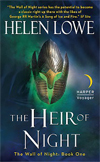
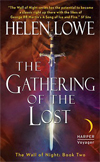
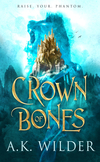
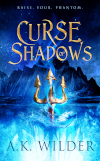
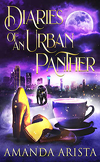
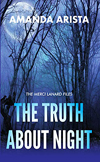

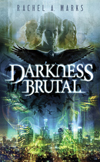
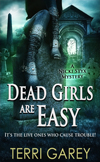
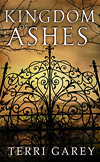
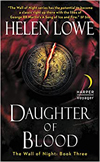
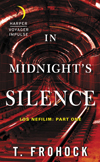

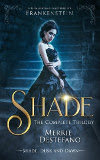

6 comments:
This sounds amazing, Helen. Steam-punk, fantasy, space with Lesbian necromancers?
Incredible!
Thanks for this series. I love it!
"I know" Plus shades & rapier duels: fun to the max.��
Nine Houses? Heirs to the Nine Houses? That sounds kinda like your Wall of Night series to me!
It is a very good book and I agree with the write-up for this book. It is a big mixture from several SF/F sub-genres but it does work, and it is a very entertaining and compelling read.
Hey Fangal,
On rereading the post I can see how you've spotted a similarity, but having read GIDEON I can assure you that it's really the only nexus with my own story in the WALL series. Except, of course, for both books having a goodly number of leading female characters as well. Awesome, huh?! And I'm sure if you read "Gideon the Ninth", and I do hope you will, you will concur with my analysis.:-)
Hi June, I was pretty sure you would enjoy it! And I love a good mashup that works in storytelling terms. It's all part of the reading and writing fun, imho. :)
Post a Comment